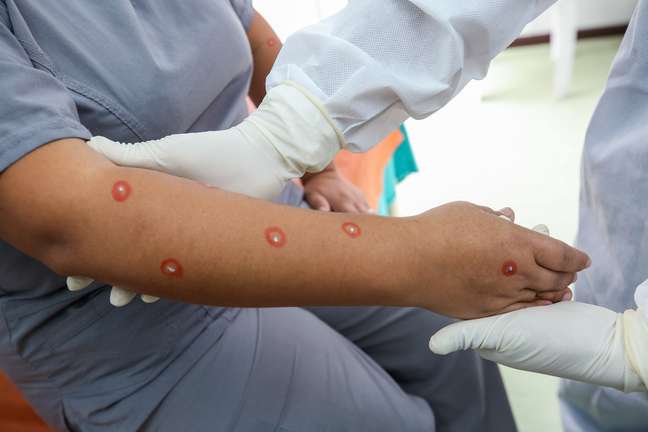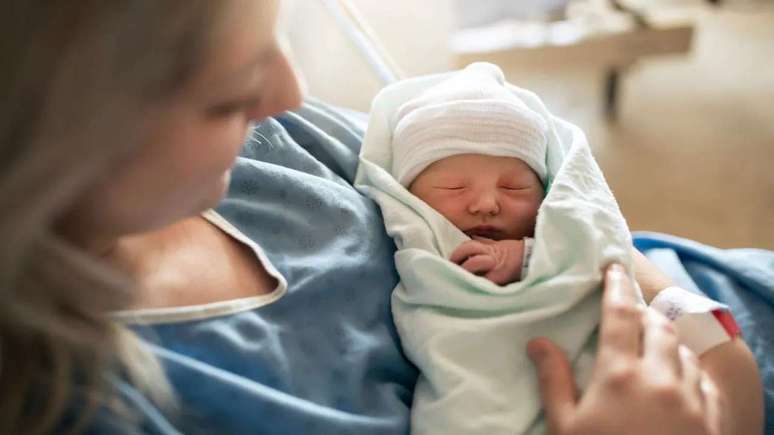Studies have identified new clinical manifestations of the infection; orientation is to seek medical attention to clear the suspicion or make the diagnosis

In the archives of medical literature, the injuries caused by monkeypox appear as papules, solid, slightly raised marks that often evolve into pustules, with pus inside them, or vesicles, fluid-filled blisters that, when ruptured, become sores. With the increase in the number of cases in the current disease outbreak, however, other clinical manifestations of these injuries have been analyzed by studies and perceived by healthcare professionals.
According to the dermatologist Egon Luiz Rodrigues Daxbachercoordinator of the Department of Infectious and Parasitic Diseases at Brazilian Society of Dermatology (SBD), this is expected behavior when cases of infection increase or when different foci of the disease are analyzed. “We are faced with different conditions and these injuries are now starting to be described. As more cases are recognized and more tests are performed, it will be possible to have more information on these characteristics, be they new or isolated phenomena,” he explains.
Features ranging from the classic description of monkeypox were also detected at the Hospital das Clínicas da Faculdade de Medicina da Universidade de São Paulo (HCFMUSP), one of the reference centers for the treatment of cases of the disease in Brazil. “It was always said that the lesions would be at the same stage, but, in practice, we found them in different states; some spots, some papules and still others with blisters, which would be more similar to what happens in chickenpox or chickenpox,” he exemplifies. Ana Catharina Nastri, infectious disease physician and ward supervisor at the hospital’s Infectious Diseases Division.
According to doctors, some of the forms of occurrence that have been recorded are:
– papules
– pustules
– Navel lesions in which in the center of the elevation of the gallbladder there is a downward protrusion, resembling a navel
– A single lesion all over the patient’s body
– Lesions only in mucous areas, such as the mouth
– Injuries in only one part of the body
– Surfaces with formation of bubbles
In cases where the contamination has occurred by sexual contact, the signs are noticed concentrated in the genital region and, as a note of the San Paolo Municipal Department of Healthit has been observed that their appearance changes in cases where the diagnoses of sexually transmitted infections (IST) and monkeypox mix.
The infectologist notes that similar observations have also been made in other countries. A scientific research carried out in the UK and published in the journal The British medical journal identified pain in the region of the anus and swelling of the penis as new symptoms linked to the onset of monkeypox. In addition to skin lesions and pain, the 197 patients undergoing clinical analysis also reported having fever.
Published in the same journal, a study conducted in Spain with 185 patients recorded a new form of lesion characterized by the formation of whitish pseudo-pustules in which there is no fluid or pus. After some time, they undergo a process of necrosis and rupture in the form of wounds. Research suggests that the signs appear locally in the region of the body where the virus was inoculated into the body, which occurs in diseases caused by other viruses of the genus Orthopoxvirus and may, with further study, demonstrate a characteristic of the virus. current outbreak of monkeypox.
How to differentiate yourself from other diseases?
Since the diagnosis of the first case of monkeypox recorded in the capital of Sao Paulo two months ago, the disease has spread to 67 municipalities in the state. With 1,370 cases registered up to Tuesday 9, the capital today concentrates 80% of the 1,636 patients. According to clinical experience so far, the signs of monkeypox can resemble those caused by other diseases..
Ana Catharina Nastri explains that the lesions appeared on the palms of the patients’ hands, a feature commonly attributed to syphilis. In terms of appearance they can also be confused with sores caused by Sexually Transmitted Infections, such as the red spots of disseminated gonorrhea, the localized and concentrated blisters of herpes and syphilis itself, which, according to the doctor, can trigger different types. of skin rashes.
They can also be very similar to the umbilicated and solid lesions of the molluscum contagiosum – a relatively common disease in children caused by the poxvirus, a relative of smallpox – and even to drug reactions, capable of triggering, among other manifestations, red spots and blisters on the skin. .
In the event of a suspected infection, some of the factors to consider are the existence of contact with someone infected, even if indirect, and the existence of injuries. The guideline is to consult a doctor to eliminate the doubt or make the diagnosis: “There are some characteristics that are more suggestive, such as the umbilicated shape, but there have already been positive results for the disease in cases that, just looking at the injuries, we would think it wasn’t, “explains the infectious disease specialist.
For Daxbacher care must be taken that the presentation of different types of vesicles is not a factor that leads to a decrease in confirmed cases.. “This is the most important thing when describing new variants of a disease; having the information to be able to suspect and diagnose when it would not necessarily be considered,” she points out.
Necessary care for injuries
According to the World Health Organization (WHO) classification, monkeypox is considered mild, moderate, or severe based on the number of lesions the patient has experienced. Although it is possible that they do not spread throughout the body or that there is a single wound, experts point out that this does not make the manifestation of the disease any less contagious. Forms of prevention, which include avoiding close contact with infected people, reducing sexual activity with multiple partners, and washing hands before eating or touching your face, remain the same.
The same goes for the need to isolate contaminated people and the way to treat injuries at home, as there are not so many cases where patients need to be hospitalized. The recommendation is to always keep the wounds clean with soap and water, without the need for dressings and without touching them often. If you have to go to the doctor, you have to cover all wounds with clothing when you leave the house and if any secretion leaks through the fabric, the garment is considered contaminated.
Isolation
The isolation time for monkeypox cases can range from 14 days to more than a month and can only be stopped when the skin has fully recovered, unlike, for example, chickenpox. “As long as there is a wound, even with a dry scab, the patient is still considered a potential transmitter,” reinforces the dermatologist. The time required for wounds to disappear varies depending on factors such as the extent they cover, their quantity, their size and whether they are on the skin or in the mucous tissue.
The Municipal Health Department clarifies that all patients are monitored by the municipal and state health supervisory bodies and show no signs of aggravation. Support for suspected cases is available throughout the municipal health network, such as basic health units (UBS), emergency rooms and emergency services, and according to the SMS, the network has supplies for sample collection of skin lesions (secretions or parts of dry wounds) for laboratory analysis.
Source: Terra
Benjamin Smith is a fashion journalist and author at Gossipify, known for his coverage of the latest fashion trends and industry insights. He writes about clothing, shoes, accessories, and runway shows, providing in-depth analysis and unique perspectives. He’s respected for his ability to spot emerging designers and trends, and for providing practical fashion advice to readers.






-vf3no13sgaqt.jpg)
